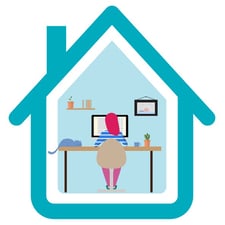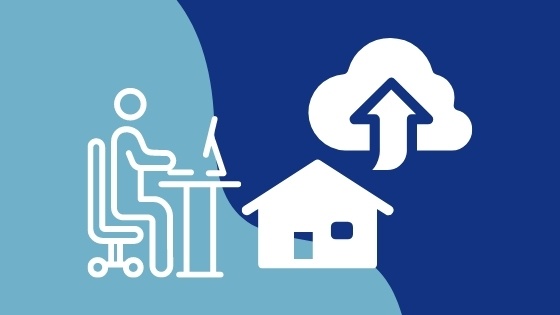 With many offices closed across the country for the foreseeable future, teams are relying on new channels for online messaging and video chat to communicate and collaborate. Employees at companies like Google, Sony Music and Indeed, for example,
won’t be going back to the office
until at least 2021, and some, including those at Facebook, Shopify and Zillow, have been advised they can work from home
forever
if they choose to.
With many offices closed across the country for the foreseeable future, teams are relying on new channels for online messaging and video chat to communicate and collaborate. Employees at companies like Google, Sony Music and Indeed, for example,
won’t be going back to the office
until at least 2021, and some, including those at Facebook, Shopify and Zillow, have been advised they can work from home
forever
if they choose to.
But despite team members being far apart, day-to-day work must go on. With so many virtual communication options to choose from, which platform is the right one for your small business? We’ll compare the pros and cons of five of the top channels to help you adjust your work style for remote work, whether it’s a short-term solution or your long-term game plan.
Slack
Slack is, at its core, an online messaging platform. Released in 2013, it became a fan-favorite among tech companies and quickly expanded its reach into industries of all types.
Pros: Slack’s easy, intuitive chat-style interface is great for minimizing overloaded inboxes, eliminating long back-and-forth email threads, and enabling near-instant communication. Slack gives you the ability to create chats for the entire organization or break them out by specific teams and projects, which is perfect for keeping information on a certain topic organized in an easy-to-access place. It integrates with a ton of other apps to save time and boost productivity, like Trello for project management and Hubspot for receiving CRM notifications.
Cons: While Slack’s numerous integrations will give you plenty of functionality, you can’t make customizations without some development expertise. For example, there’s not an easy way to set up and send a recurring message, like reminding your team to submit their timesheets every Friday. It’s also not a standalone solution; you’ll need to rely on other apps for things like video conferencing with people outside your organization. Finally, though the chat interface is great for quick back-and-forth, it also means old messages quickly get buried, which can make information hard to find if you need to come back to it later.
Zoom
 Zoom has been around since 2011, but it exploded in popularity thanks to Covid-19 and the rise of work from home arrangements. It’s a software-free way to host and attend video conferences.
Zoom has been around since 2011, but it exploded in popularity thanks to Covid-19 and the rise of work from home arrangements. It’s a software-free way to host and attend video conferences.
Pros: Zoom excels at ease of use. It’s quick to get up and running and even a first-time user can find their way around the interface with little trouble. The free plan has everything you’ll need to host a meeting with a small group, including basic functions like chat and screen sharing.
Cons: Many companies will quickly find that their needs go beyond what’s offered in the free version of the app–meetings limited to 100 participants and 40 minutes long. When your internet connection is less than perfect, you might experience video and audio lags that can be frustrating. Though Zoom doesn’t require a full-on software download, it does require installing a browser extension or downloading a mobile app to join your first meeting.
Google Meet
In 2019, Google began phasing out Google Hangouts and replacing it with the hybrid approach of Google Chat and Google Meet.
Pros: Security is paramount, with all video meetings encrypted in transit (Zoom has run into some serious security and privacy issues in recent months). In addition to hosting meetings, you can use Meet’s broadcast feature to stream live events to up to 100,000 viewers, which is great for things like keynotes and conferences. Anyone with a Google account can host and attend Meet conferences, and as of March 2020 Google made the platform’s full range of advanced features free to anyone using G Suite, which many organizations already are.
Cons: Though it offers many features, the Meet dashboard isn’t as intuitive as some other platforms. Using the Groups feature to divide participants into smaller breakout groups, for example, can be confusing. The uppermost tier of the platform maxes out at 250 meeting attendees, which will be limiting for some larger organizations.
Microsoft Teams
Teams is Microsoft’s answer to professional video conferencing, combining chat, file sharing, video meetings and application integration.
Pros: If Microsoft Office is your company’s workplace software of choice, using Teams is a no-brainer to work from home more seamlessly. Teams facilitates easy sharing and collaboration on files like Word documents, PowerPoint presentations and Excel spreadsheets. The platform is linked to your calendar, so it’s easy to see whether a colleague is available or determine when they might have a free moment to chat.
Cons: Teams takes more getting used to than other platforms, and some of its limitations can cause repeat work. For example, the setup of its integration with Outlook means some users get stuck checking messages in both Teams and in their email client. The inability to move messaging channels between different teams means you might have two channels going on the same topic, which can breed confusion. It’s also designed primarily for people who work at the same company – it’s not easy to invite and control the permissions for guest users like independent contractors (which is fairly easy to do on Slack).
Skype
Released in 2003, Skype is the old-timer of the bunch. It’s a straightforward channel for voice calls and video chats.

Pros: If your primary need is to host video calls, Skype is your go-to. Since it’s been around so long, most internet users are familiar with the platform. You can use it to call cell phones and make cheap calls abroad, which is nice if you work across international borders. You can also obtain a local Skype phone number in another region and route it to your cell phone, which is ideal if you want to have a more local presence in search listings without juggling different phone numbers via your cellular provider.
Cons: All Skype calls are capped at 50 participants, which will rule it out for a lot of larger organizations. It also has noticeably more software updates than other platforms, which can slow you down when you’re just looking to open the app and make a quick call. Skype works best over a strong Wi-Fi connection; it’s not great and can be downright unusable if you only have limited cell service.
At the end of the day, the right online messaging program to help your employees work from home will depend on your company size, conferencing needs and nature of your business. Thankfully, all of the platforms mentioned here have either a free tier or a trial period so you can test the waters and see what works best for you before making a commitment.




